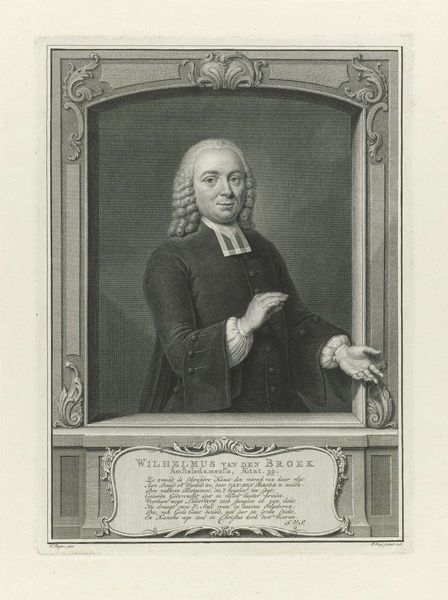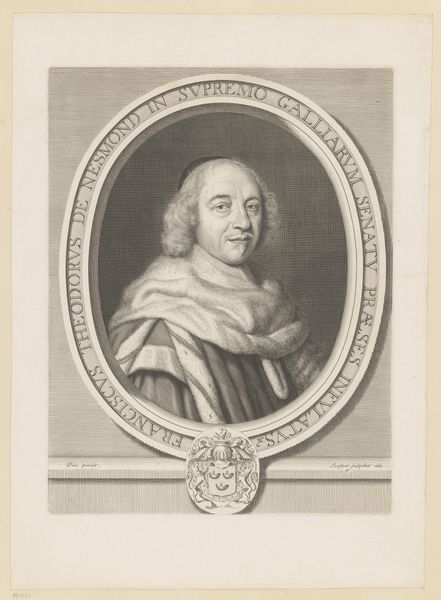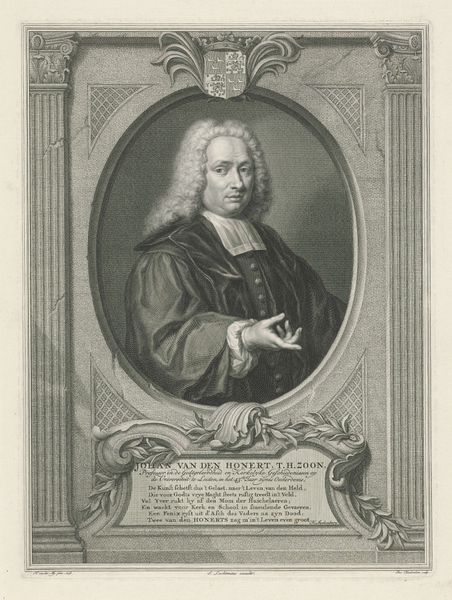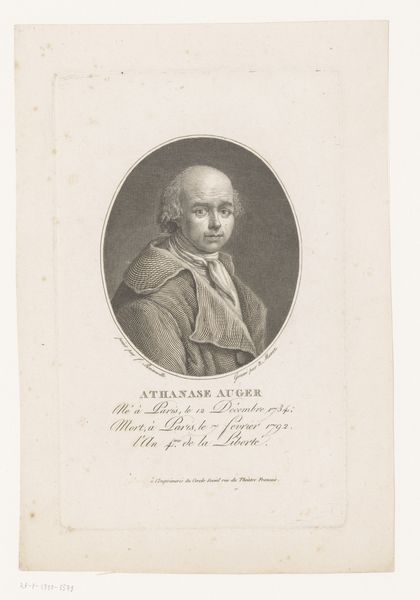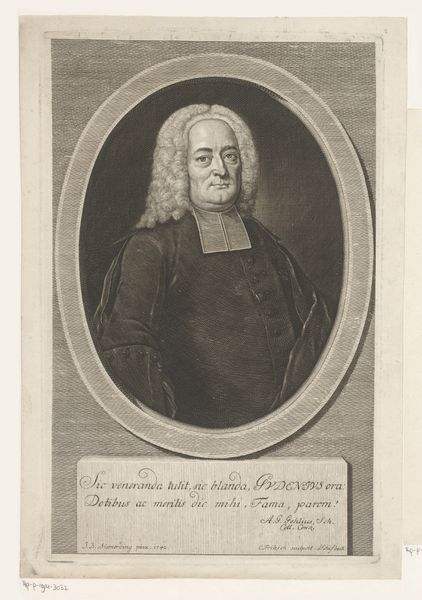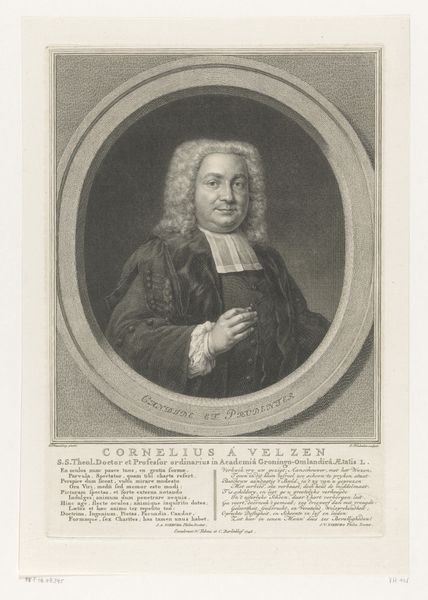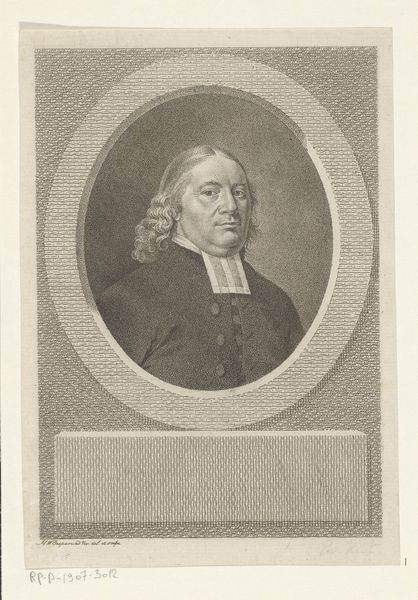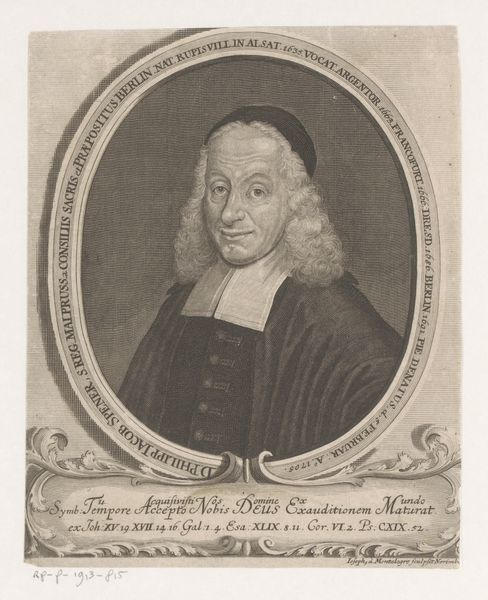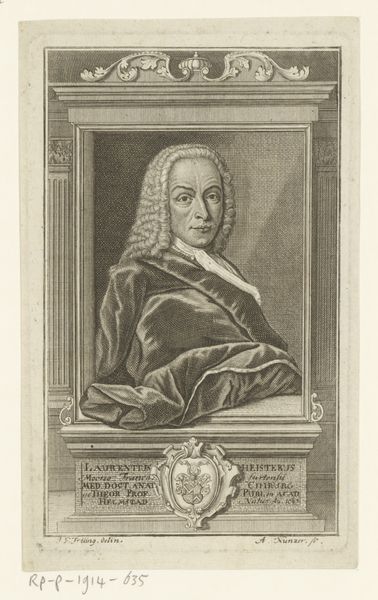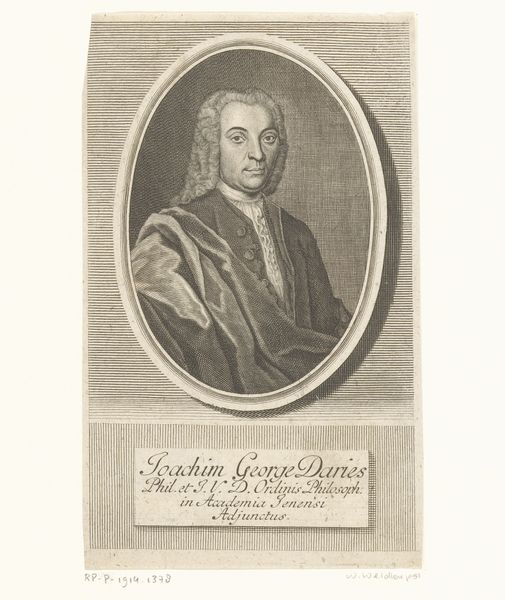
Dimensions: height 311 mm, width 216 mm
Copyright: Rijks Museum: Open Domain
Curator: Immediately I notice a somewhat somber quality to this portrait. The muted tones, the sitter’s expression—it all evokes a sense of gravitas. Editor: Indeed. What we're looking at is a pencil drawing titled "Portret van Johann Benjamin Dragheim." It's attributed to Matthaeus Deisch and was likely made sometime between 1761 and 1789. Pencil as a medium is interesting here. Think about the accessibility versus the expense of oil paints during this period and how this democratized portraiture. Curator: That's a keen observation about access. The detail achievable with pencil is remarkable, though, isn't it? Look at the subtle shading on his face and the texture of his clothing. What does knowing his profession adds to our understanding of this drawing? Editor: Dragheim was a pastor. Consider the social role of religious leaders then – mediators of power, knowledge, and morality. Deisch captures him with that faint air of authority, yet there's also a hint of vulnerability. The material constraints—pencil rather than oils, paper instead of canvas—could be viewed as reflective of certain moral strictures present at the time, as well as the man’s position. Curator: Absolutely. It speaks volumes about the potential intersection of religion and socio-economic structures. Also the choice to represent Dragheim, who although a religious figure also had social status: this creates an interesting statement. Editor: It's precisely this intersection of artistic skill, material conditions, and social identity that makes the artwork so compelling. It allows us a glimpse into the life and times of both the sitter and the artist. This pencil portrait underscores a democratization and perhaps reflects an attempt at depicting something deeper than surface appearances of wealth or nobility that characterized those portrait times. Curator: On that note, thinking about access, this might provide a powerful case for looking at lesser known artist and those without extensive backing in art history discourse to understand their works. Editor: Precisely. Seeing beyond the singular image and comprehending its creation unlocks its layered historical narrative.
Comments
No comments
Be the first to comment and join the conversation on the ultimate creative platform.

